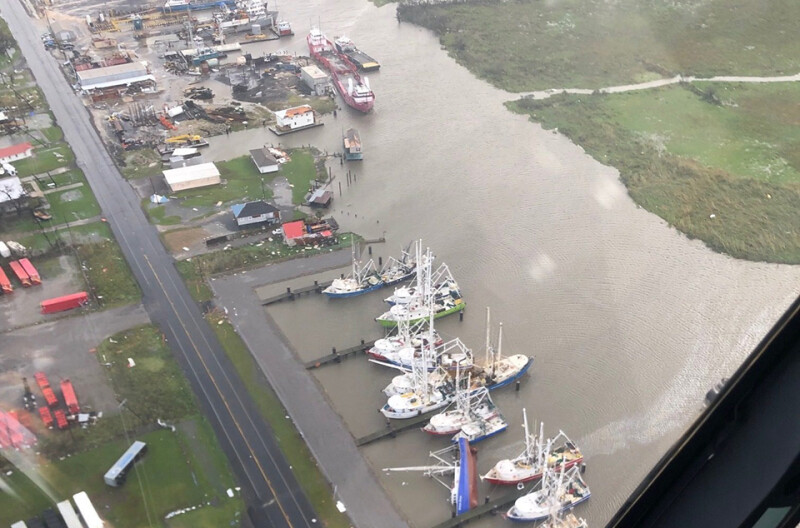There will likely be lingering disruptions to barge traffic on the Lower Mississippi River from Hurricane Ida as Louisiana struggles to restore power and barge companies work to get their equipment and cargo safely moving again.
Major hurricanes also produce large amounts of debris in waterways that will have to be identified and cleared, and in some cases dredging might be needed as sediment has been swirled up by the storm. Of immediate concern on Monday was the collapse of an electrical power tower upriver in Jefferson Parish, La., where officials say power lines fell into the Mississippi River at Avondale, 13 miles northeast of New Orleans. The Coast Guard is expected to oversee the salvage work. About half the state of Louisiana was without power.
As of 10 p.m. on Saturday, the Coast Guard stopped all vessel movements on the Lower Miss from the Gulf of Mexico to river mile 303, which includes Baton Rouge, La. Meanwhile on Monday, the Port of New Orleans halted all container and breakbulk operations, potentially causing grain export delays.
Just to give an idea of how important this area is to barge transportation, the Lower Miss is by far the largest export region for soybeans (61% of the U.S. export crops moves through here) and 58% of corn exports. During the week of Aug. 19, 464,138 metric tons (18.3 million bushels) of corn, 141,859 metric tons (5.2 million bushels) of soybeans and 71,696 metric tons (2.6 million bushels) of wheat were exported through area terminals. During that week, a total of 487 barges of grain were unloaded.
“Any lengthy disruption to export activity in this key region warrants our attention and concern,” said Mike Steenhoek, executive director of the Soy Transportation Coalition in Ankeny, Iowa, which represents soybean farmers.
Such a halt is also troubling because it disrupts a big success story about the comeback that the barge industry has been experiencing in vessel traffic after a deep dip in volumes due to the pandemic over the past year.
During a media tour last week to Nashville, Tenn., and Paducah, Ky., organized by the Waterways Council Inc., reporters were able to see the uptick in traffic along the Cumberland in Tennessee rivers first hand from the wheelhouse of an Ingram Barge towboat, and speak to barge operators in Paducah who work the Ohio and Tennessee rivers.
Operators reported that they are transporting increased volumes of diesel, gasoline, coal for domestic and export customers and construction materials like sand that is used in concrete, asphalt and cement.
Increases in coal movements are linked to higher natural gas prices which have made coal more competitive in the energy market as well as the demands for energy during a hot summer, and diesel, ethanol and gasoline spikes reflect a broader economic recovery in which people are traveling more since the beginning of the pandemic.
Petrochemicals are also making a comeback, they said, and grain movements have remained strong throughout the year.
Along the Cumberland River, it was evident that coal was moving to power plants and building materials to Nashville, which is experiencing a building boom and is the fastest growing region of Tennessee.
The industry has been busy, operators said, and they are now preparing for the grain harvest, which is expected to produce strong yields of corn, soybeans and wheat in the coming weeks.
“We can get the boats ready, but we need people to crew them,” said Darin Adrian, executive vice president of the River Division at Marquette Transportation Co., Paducah, reflecting the concerns of many operators about the challenge to hire and retain workers in a tight job market.




